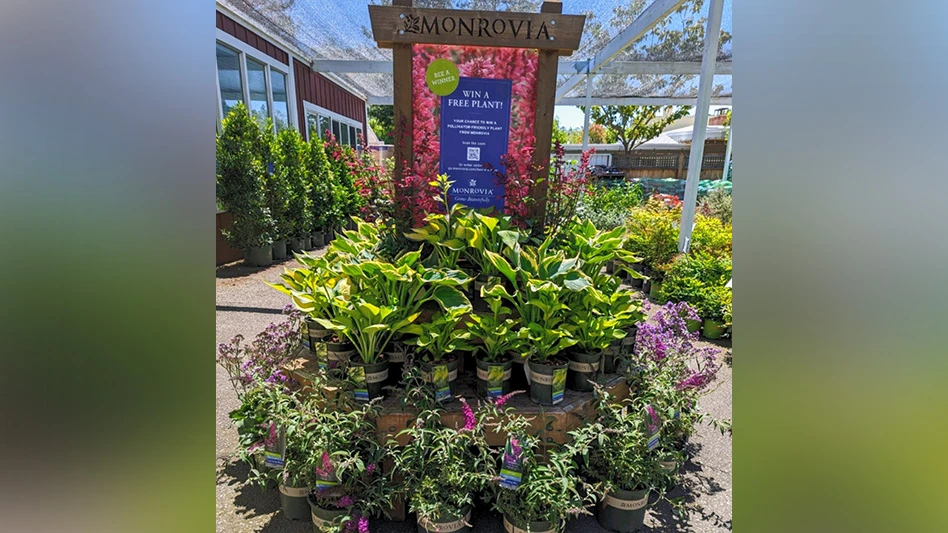
 Independent garden centers are quick to cite “great customer service” as the primary strength of their operation. But what does that mean in this day and age? Especially when various demographic groups have different ideas on what makes an ideal retail experience?
Independent garden centers are quick to cite “great customer service” as the primary strength of their operation. But what does that mean in this day and age? Especially when various demographic groups have different ideas on what makes an ideal retail experience?
It’s true that you can’t be all things to all people. It’s worth considering, though, how you can make your store appealing to different customer segments. The long-term viability of your operation hinges on making changes to accommodate demographic shifts.
Three generational cohorts have been in your crosshairs for some time: Baby Boomers, Generation X and Generation Y. Individuals in these groups share some common traits. But their unique cares and concerns are not static. Each of these demographics are changing as they become more mature, adjust to the rigors of family life and deal with shifts in financial priorities.
As a marketing exercise, it helps to evaluate both your current target market and people who will make up your customer base in years to come. Then evaluate your store and its practices. Are you doing all you can to accommodate different mobility levels? Can harried parents easily navigate you store? Are you relevant to young professionals? Let’s take a look at what makes a superior shopping experience for Baby Boomers, Generation X/Y and beyond.
Baby Boom-Days
 County Line Nursery in Harleysville, Pa., wants all customers to feel like a “kid in a candy shop.” It employs different tactics to accommodate multiple generations: catchy signage, vignette displays, rest areas and—perhaps most importantly—a sense of fun.The majority of garden retailers will tell you Baby Boomers are still their primary clientele. It’s a group you know and love. It’s also a group that’s changing before your very eyes—especially the leading edge of this generation.
County Line Nursery in Harleysville, Pa., wants all customers to feel like a “kid in a candy shop.” It employs different tactics to accommodate multiple generations: catchy signage, vignette displays, rest areas and—perhaps most importantly—a sense of fun.The majority of garden retailers will tell you Baby Boomers are still their primary clientele. It’s a group you know and love. It’s also a group that’s changing before your very eyes—especially the leading edge of this generation.
Stories about the “graying” of Baby Boomers are published every day. Over the next decade, garden centers will find this crucial customer segment is less willing (or able) to navigate gravel-covered plant yards, narrow greenhouse aisles and poorly designed cash wraps.
Baby Boomers’ buying power will still be a force to be reckoned with, even as more Boomer money goes toward retirement living or health-care costs in coming years.
Not only does this group have buying power—it’s also a highly organized and vocal cohort. If your store isn’t meeting Boomers’ needs, you’re definitely going to hear about it. William McClenathan, former nursery owner and current co-host of Gardentime, has certainly encountered this.
While working with a garden center in Portland, Ore., he oversaw several changes to accommodate Baby Boomers. Most aisles in the store were expanded. Hard walking surfaces were added wherever possible to accommodate wagons, wheelchairs, scooters and strollers.
“Tables were added to every department but trees and roses/vines,” McClenathan said. “This made picking up plants so much easier whether you were walking or in a wheelchair. It also deterred children from putting rocks into plants or breaking plants, since they couldn’t reach them. Plus it just looked so much cleaner.”
Displays were tweaked so that they were never deeper than arm’s length, which helped customers make selections easier and improved the staff’s ability to maintain plants.
“Signage was completely overhauled,” McClenathan added. “All signs were white printed on black background so it was easier to read and it gave a consistent look to the entire nursery.”
Little changes made a big difference, according to McClenathan. But getting your staff on board with these efforts is the key to success.
“You can do everything perfectly for all customers but, if your staff does not see the value in it, you’re screwed! You may have the perfect hard surfaces, great, clear signage, wide aisles and easy access doorways. All of this is for naught if your staff does not treat seniors, disabled and customers with children with value and respect.”
Generation X-tra
Generation X is only about 75 percent the size of the Baby Boom generation. Despite its smaller size, Gen X has consumer clout. According to a report issued this spring from PricewaterhouseCoopers and Kantar Retail, Generation X and Y will fuel the nation’s post-recession recovery.
Seventy-one percent of people in this demographic have children under the age of 18, and Gen Xers are entering their peak earning years.
Up-market Generation X members will substantially outperform up-market Baby Boomers in terms of retail spending. Forty-seven percent of up-market Baby Boomers plan to buy only things they truly need, compared to 38 percent of up-market Xers.
International garden-center consultant John Stanley has frequently cited IKEA as an ideal environment for Generation X shoppers.
The Swedish retail-giant has spread its destination shopping concept across the globe. IKEA excels at creating vignette displays showing how its products fit into an individual’s lifestyle. Beyond that, IKEA provides shoppers lots of extra services, including free childcare, an affordable café and large family-friendly restrooms.
These kinds of kid-friendly elements are something garden centers have picked up on to attract Generation X customers.
“We have three different kid areas,” said Janet Heishman, owner of Gabalot Gardens in Strasburg, Va. “Two involve rocks/pebbles. We are now the place to come when the kids are bored.”
Frank Fernicola Jr., co-owner at Fairfield Garden Center in Fairfield, N.J. said paving the nursery area has helped his store pull in Generation X consumers and their children.
“Baby strollers have unencumbered access to the nursery yard,” he said. “Plus, parents like less puddles for children to get wet and muddy. Often young professionals will stop in on their lunch breaks and walk around without getting their shoes dirty.”
Other enhancements they’ve made include changing tables in the restrooms, adding cement benches throughout the store and putting out more garbage cans to keep litter in check.
“Over the years we’ve also built up our Halloween season with a haunted house, children’s rids and a Halloween decorating shop,” Fernicola added. “[During] this time of year we see many younger families coming in and having fun—and this allows us to get exposed to a larger customer base.”
 Generation Y-buy?
Generation Y-buy?
Generation Y—also known as the Millennial generation—represents the biggest challenge for garden retailers. Many people in this cohort are the children of Baby Boomers—hence, they’re most likely to end up in garden centers as “tagalong” shoppers. They’re certainly not a target demographic for garden centers at this point. But retailers need to be aware of what makes Gen-Y tick and how to accommodate them as customers.
The recent PricewaterhouseCoopers and Kantar Retail report sheds some light on Millennials. A higher proportion of Gen Y’s income is discretionary—as a result of fewer debts and a less-urgent need to accumulate wealth in the immediate term.
It’s a generation accustomed to instant gratification, and it demands the latest gadgets. Spending on technology staples—like MP3 players and smartphones—will remain a priority and create unique opportunities for tech-oriented retailers.
But, obviously, garden centers aren’t techno-driven merchants. To accommodate Gen Y, retailers will need to take on some of the trappings of electronic retailers.
Give these customers lots of signage and prototypes to review on their own. You’ll need to get accustomed to a group of consumers who want information immediately—but don’t require it to be delivered face-to-face. For these consumers, a computer kiosk could be more welcoming than an actual salesperson.
Folks like Dave Williams with Williams Nursery in Westfield, N.J., are laying a foundation now to accommodate these customers in the future. And he’s doing it “virtually.” The store has built up a strong social media presence via its website, blog, Facebook page and Twitter feed. When Gen Y becomes a solid customer base for this nursery, it will already be speaking their language.
And, Williams would add, they’re already using the “tools” Millennials are used to. It’s not unusual for him to update his various websites using his iPhone.

Explore the July 2010 Issue
Check out more from this issue and find your next story to read.
Latest from Garden Center
- This Florida garden center's busiest days are in the fall, not spring. Find out how they do it
- Terra Nova Nurseries releases new agastache variety, 'Peach Pearl'
- The Certified Shopify Online Garden Center provides local retailers with ecommerce tool
- Meet the All-America Selections AAS winners for 2025
- Endless Summer hydrangeas and Suntory Senetti glam up Grammys red carpet
- Ball Seed releases 2025 edition of 'Thrive and Flourish' for landscape and garden retail
- American Floral Endowment's Fred C. Gloeckner Foundation Research Fund accepting grant proposals
- Floral Marketing Fund and CalFlowers partner to advance floral industry





